Research Overview
Research in the McCarthy group lies primarily in the area of high-resolution rotational spectroscopy of highly reactive molecules that are believed to be key intermediates in astronomical, atmospheric, and combustion processes, but which often are poorly characterized in any region of the electromagnetic spectrum prior to our work.
Fourier transform microwave spectroscopy applied to a supersonic molecular beam is frequently employed to detect these transient species; this technique has emerged in the past decades as one of the most successful methods to discover new molecules and to determine their structures. In our laboratory alone, more than 250 entirely new species have been detected. These discoveries include neutral and ionized (both positively- and negatively-charged) species, radicals, carbenes, and high energy isomers, and encompass a wide range of sizes and structures: simple triatomics to polyyne chains with nearly 20 heavy atoms, branched chains, and small rings. Studies of this kind unambiguously establish the existence of these intermediates, and provide insights into their electronic and molecular structure, and formation; precise spectroscopic constants, optimized experimental conditions, and derived abundances allow subsequent laboratory experiments or astronomical observations to then be undertaken with confidence. Precise structural determinations provide stringent benchmarks for quantum chemical calculations, which allow chemical models with greater predictive power to be developed.
Instrumental refinement and technical innovation continue to be emphasized in our group, with considerable effort now directed towards the development of methodologies using broadband and cavity techniques to rapidly detect and group spectral lines to individual chemical species using automatic screening and spectral line cross-correlation double resonance techniques.

